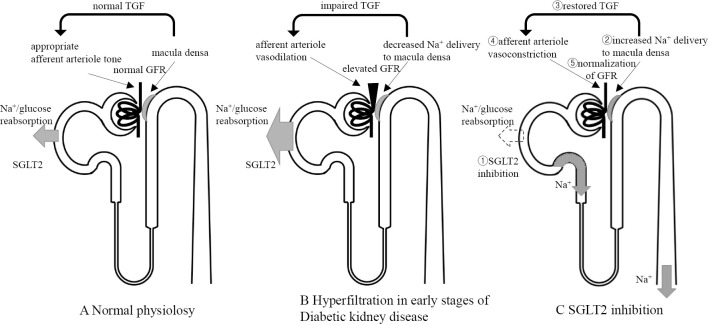Figure 6.
Postulated tubuloglomerular feedback (TGF) mechanisms (modified from 15). A: Under physiological conditions, TGF signaling controls afferent arteriole tone to maintain GFR. Transient increases in GFR cause the macula densa to sense the increase in distal tubular Na+ concentration and GFR is eventually decreased via TGF. B: Under chronic hyperglycemia, Na+ and glucose reabsorption by SGLT2 is promoted and TGF is impaired. In other words, in spite of increased GFR, the macula densa detects reduced distal tubular Na+ concentration. By this mechanism, afferent arterioles unsuitably dilate and GFR becomes elevated. C: SGLT2 inhibition results in interrupted Na+ and glucose reabsorption, leading to increased Na+ delivery to the macula densa. This allows afferent arterioles to constrict appropriately, restores TGF, and normalizes GFR. GFR: glomerular filtration rate, SGLT2: sodium-glucose cotransporter 2
Cherney DZI, Perkins BA, Soleymanlou N, Maione M, Lai V, Lee A, et al. Renal hemodynamic effect of sodium-glucose cotransporter 2 inhibition in patients with type 1 diabetes mellitus. Circulation 129: 587-597, 2014.

